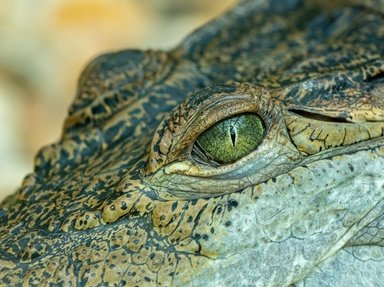Quiz Answer Key and Fun Facts
1. Once found all over China, the Chinese alligator's habitat has now been restricted to a small pocket of which river in east China?
2. The local name for the Chinese alligator is "T'o" or "Yow-Lung" (or another variation), which translates in to which English word?
3. The Chinese alligator is slightly larger than its cousin the American alligator.
4. Which of these is a unusual feature of the Chinese alligator's appearance?
5. An interesting fact about the Chinese alligator is that they lay the smallest eggs of any crocodilian.
6. Which of these is the Chinese alligator least likely to consume?
7. While Chinese alligators do not "hibernate" exactly, they do enter a hibernation-like state called "brumation". For approximately how many months do they brumate for?
8. Poisons set to eliminate which pest have contributed to the decline in Chinese alligator population?
9. In traditional Chinese medicine, Chinese alligator meat is thought to prevent which disease?
10. While the future may seem bleak for the Chinese alligator, there is a glimmer of hope. Breeding of the species in captivity has been very successful worldwide and efforts to reintroduce captive-bred specimens to the wild are well under way.
In what year were the first captive bred Chinese alligator specimens reintroduced to the wild?
Source: Author
Daaanieeel
This quiz was reviewed by FunTrivia editor
Tizzabelle before going online.
Any errors found in FunTrivia content are routinely corrected through our feedback system.

